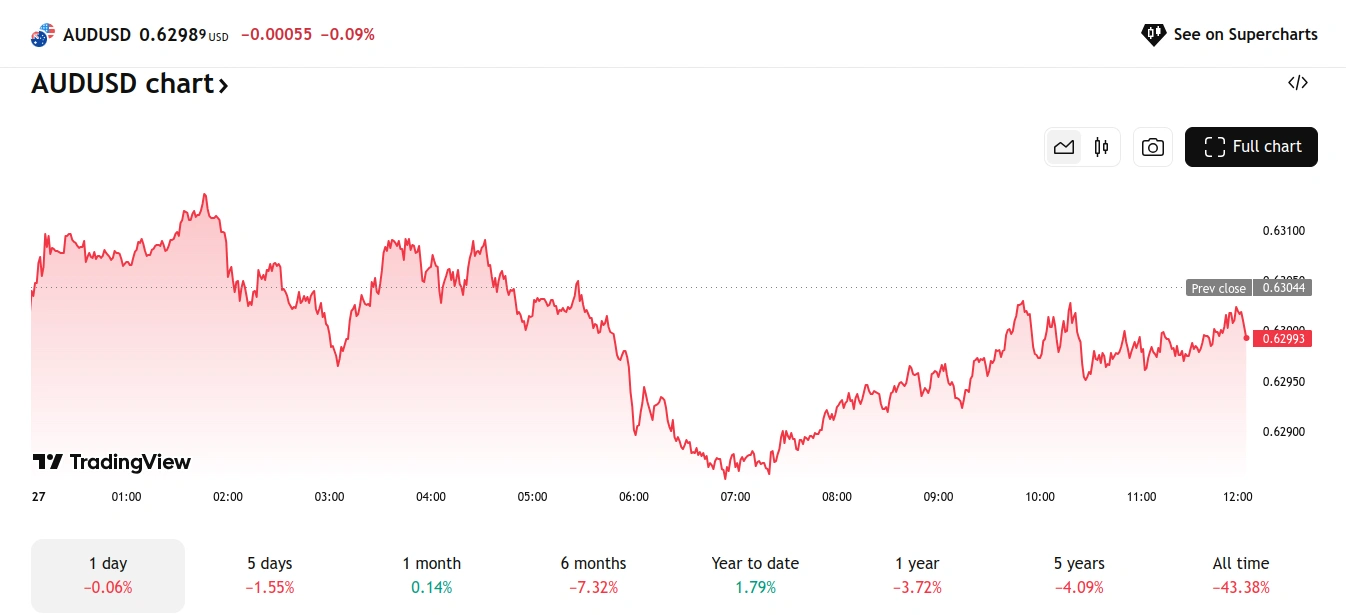Key momentsThe AUD/USD has fallen below its recent high and is approaching its 55-day moving average.The EUR/JPY is hovering above its recent low, with a key support zone holding for now, but may be p
AUD/USD Dips to $0.6286 Falling Below Its Recent January High
Key moments
- The AUD/USD has fallen below its recent high and is approaching its 55-day moving average.
- The EUR/JPY is hovering above its recent low, with a key support zone holding for now, but may be poised for further declines.
- The USD/JPY has stabilized after a brief slide, with the yen remaining in demand as a safe-haven asset amid global uncertainty.
The Australian dollar’s downward trend against the US dollar continues, with the AUD/USD pair dipping below its recent high of $0.6302 to reach a low of $0.6286 on Thursday. If this decline persists, the next level of support would be the 55-day simple moving average, currently situated at $0.6262. The AUD/USD has been on a downward trajectory for the third time in four trading days, having peaked near the falling 100-day moving average at $0.6407.
The pair’s decline has been marked by volatility, with initial support holding near a key swing area between $0.6287 and $0.6301. However, after a brief rebound, sellers regained control, pushing the pair lower. The attempted rebound saw the pair rise to a resistance zone between $0.6327 and $0.6336, but buying momentum faded, leading to a renewed push lower.

In other currency news, the EUR/JPY pair is still hovering above its recent low of ¥155.82, which was reached on Friday. This support zone, situated between the December-to-February lows of ¥156.18 and ¥155.65, is currently holding. However, if this support zone fails, the next level of support would likely be the ¥155.00 region. The euro zone’s interest rate has been falling rapidly, while Japan’s monetary policy is tightening for the first time in decades, which could lead to further declines in the EUR/JPY.
The USD/JPY pair has stabilized after a brief slide, having reached a low of ¥148.57, below the December low of ¥148.65. The pair’s decline from the 55-day simple moving average at ¥154.70 has been significant, but it has found support at the current level. If this support fails, the next level of support would be the ¥147.21 September high. On the other hand, minor resistance at the ¥150.93 early February low may be revisited if the pair continues to consolidate.
Recent developments in trade tensions have lent support to the US dollar, with the Trump administration announcing plans to review the possibility of imposing reciprocal 25% tariffs on European cars and other goods. Additionally, tariffs on imports from Mexico and Canada are set to take effect on April 2, rather than the initially planned March 4. These developments have intensified trade tensions, which could continue to influence currency markets.
The yen remains strong, with expectations that the Bank of Japan may continue to raise interest rates this year following the release of Q4 inflation data. The yen is also in demand as a safe-haven asset amid ongoing uncertainty and underlying risks in global financial markets. A crucial set of economic data is set to be released on Friday, including figures on industrial production, retail sales, and Tokyo’s inflation rate. These reports could provide further insight into the Bank of Japan’s future monetary policy trajectory and influence the yen’s value.








